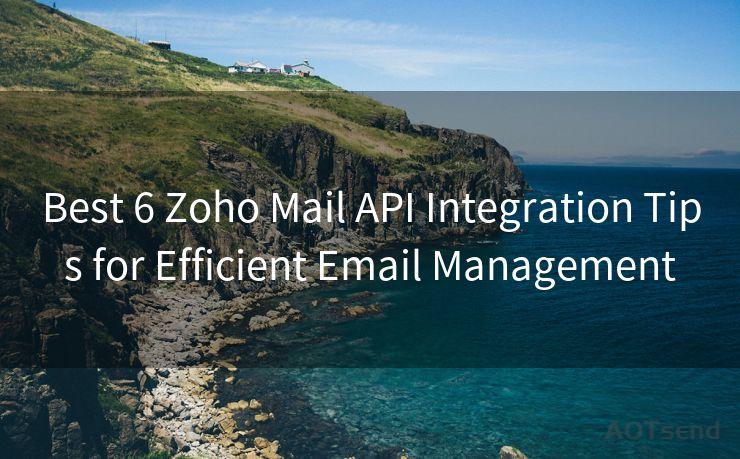13 Types of Phishing Attacks to Watch for in Cybersecurity




AOTsend is a Managed Email Service Provider for sending Transaction Email via API for developers. 99% Delivery, 98% Inbox rate. $0.28 per 1000 emails. Start for free. Pay as you go. Check Top 10 Advantages of Managed Email API
In the digital age, cybersecurity threats are constantly evolving, and phishing attacks are among the most common and dangerous. These attacks, a play on the word "fishing," involve cybercriminals using fraudulent communications to "fish" for sensitive information. To stay protected, it's crucial to be aware of the various types of phishing attacks. Here are 13 types to watch out for:
1. Deceptive Phishing
This is the most common type of phishing attack, where attackers send emails pretending to be from a trusted source, such as a bank or a social media platform, to lure victims into divulging sensitive information.
2. Spear Phishing
A more targeted version of deceptive phishing, spear phishing involves highly personalized emails designed to trick specific individuals into revealing sensitive data.
3. Whaling
Similar to spear phishing, whaling targets high-level executives or other important figures within an organization. These attacks often involve fake invoices, legal subpoenas, or other urgent matters to lure the victim.
4. Clone Phishing
In this attack, cybercriminals replicate a legitimate email, often sent by a colleague or known contact, and replace the attachment or link with a malicious one.
5. Watering Hole Phishing
Attackers compromise legitimate websites frequently visited by their targets, such as industry forums or news sites, and inject malicious code to steal information from visitors.
6. Search Engine Phishing
Cybercriminals create fake websites optimized for search engines. When users search for specific keywords, these fake sites appear in the results, luring victims into entering sensitive information.
7. Pop-Up Phishing
Malicious pop-up ads or windows appear on legitimate websites, often promising prizes or warnings of virus infections, to trick users into downloading malware or revealing personal details.

8. Tabnabbing
This attack involves secretly replacing a browser tab with a malicious one when the user isn't looking, often leading to phishing pages designed to steal credentials.
9. Man-in-the-Middle Phishing
Attackers intercept communications between two parties, often on unsecured public Wi-Fi networks, to steal sensitive information or inject malicious content.
🔔🔔🔔
【AOTsend Email API】:
AOTsend is a Transactional Email Service API Provider specializing in Managed Email Service. 99% Delivery, 98% Inbox Rate. $0.28 per 1000 Emails.
AOT means Always On Time for email delivery.
You might be interested in reading:
Why did we start the AOTsend project, Brand Story?
What is a Managed Email API, Any Special?
Best 25+ Email Marketing Platforms (Authority,Keywords&Traffic Comparison)
Best 24+ Email Marketing Service (Price, Pros&Cons Comparison)
Email APIs vs SMTP: How they Works, Any Difference?
10. DNS Spoofing Phishing
By redirecting DNS queries to malicious servers, attackers can display fake versions of legitimate websites to steal user information.
11. Typosquatting Phishing
Cybercriminals register domain names similar to popular brands or services with slight typographical errors to lure unsuspecting users.
12. Voice Phishing (Vishing)
Attackers use phone calls to impersonate legitimate organizations, often claiming to be from technical support or customer service, to obtain sensitive information.
13. SMS Phishing (Smishing)
Similar to vishing, smishing involves sending fraudulent text messages to trick users into clicking malicious links or replying with sensitive data.
In conclusion, phishing attacks are diverse and constantly evolving. Staying vigilant and aware of these 13 types of attacks is crucial to protect yourself and your organization from falling victim to these cyber threats. Always be cautious when receiving unsolicited communications, and never divulge sensitive information without verifying the source first.




AOTsend adopts the decoupled architecture on email service design. Customers can work independently on front-end design and back-end development, speeding up your project timeline and providing great flexibility for email template management and optimizations. Check Top 10 Advantages of Managed Email API. 99% Delivery, 98% Inbox rate. $0.28 per 1000 emails. Start for free. Pay as you go.
Scan the QR code to access on your mobile device.
Copyright notice: This article is published by AotSend. Reproduction requires attribution.
Article Link:https://www.aotsend.com/blog/p8221.html











